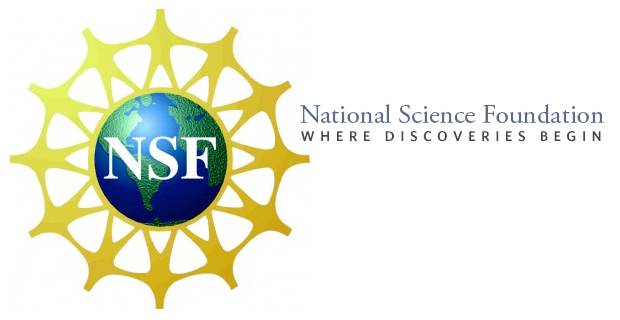
The National Science Foundation is giving you the chance to win the “NSF Scholarships in Science, Technology, Engineering, and Mathematics (S-STEM)”. All students who are academically talented and low-income, demonstrate financial needs are eligible for the scholarships. The program encourages projects to recruit a diverse applicant pool that is inclusive of members of underrepresented groups (e.g., females, African Americans, Hispanic Americans, Native Americans, including Alaska Natives and Native Pacific Islanders, persons with disabilities, first generation college students, Veterans). The program provides 60-80 awards of indirect funding amount of $70,000,000 to $95,000,000 for students who focus on educational developments.
The National Science Foundation (NSF) is an independent federal agency created by Congress in 1950 to promote the progress of science and to advance the national health, prosperity, and welfare by supporting research and education in all fields of science and engineering.
Eligibility:
To be eligible for the NSF Scholarship, the candidates must meet all the following criteria:
For the Institutions:
- An institution may submit one proposal from each constituent college or school that awards eligible degrees. (For example, a university with a College of Engineering, a School of Life Sciences, and a College of Arts and Sciences could submit one proposal from each for a total of three proposals. However, within a College of Engineering, if the Department of Electrical Engineering were submitting a proposal, a proposal from the Department of Mechanical Engineering could be submitted only in a subsequent year. The two departments in this example could choose to submit a single joint proposal.)
- An institution without constituent schools (for example, a 4-year college or a community college) may submit one proposal each year.
- An institution that is part of a larger system is considered separate for proposal submission purposes if it is geographically separate from the other campus (es) and has its own chief academic officer.
- For Strand 2 – Design and Development Type 2 Multi-Institutional Consortia, a proposal whose Principal Investigator is an educational or social science researcher in a program other than STEM does not count against the limit on the number of proposals submitted by institutions from S-STEM disciplines.
For the Recipients:
- Be citizens of the United States, nationals of the United States (as defined in section 101(a) of the Immigration and Nationality Act), aliens admitted as refugees under section 207 of the Immigration and Nationality Act, or aliens lawfully admitted to the United States for permanent residence.
- Deferred Action for Childhood Arrivals (DACA) individuals is ineligible for support from this solicitation unless they meet the requirements listed in the first sentence of this bullet.
- Be enrolled full-time in a program leading to an associate, baccalaureate, or graduate degree in one of the following disciplines for each term for which a student receives a scholarship: Biological sciences, physical sciences, including physics, chemistry, astronomy, and materials science, mathematical sciences, computer and information sciences, geosciences, engineering, or technology areas associated with the preceding fields (e.g., biotechnology, chemical technology, engineering technology, information technology)
- Demonstrate academic ability or potential.
- Be low-income and demonstrate financial need, defined for undergraduate students by the U.S. Department of Education rules for need-based Federal financial aid Free Application for Federal Student Aid (FAFSA), or, for graduate students, defined as financial eligibility for Graduate Assistance in Areas of National Need (GAANN).
How to Apply:
To be applying for the NSF Scholarship, the interested candidates may check this given link: https://www.nsf.gov/pubs/2016/nsf16540/nsf16540.htm/#prep
Supporting Documents:
The proposal should include, within the project description (limited to 15 single-spaced pages), the following:
- Results from prior NSF support, with particular emphasis on any prior S-STEM or STEP awards;
- Statement of the project objectives and plans
- Discussion of the project’s significance, including demographic information and rationale for the number of scholarships and the scholarship amount requested
- Statement and justification of the annual and total number of unique students who will be awarded scholarships over the duration of the award period, the number of scholarships awarded annually, the total number of scholarships awarded for the award period, the duration of the scholarship, and the annual and maximum amount of the scholarship for a scholarship recipient
- Discussion of activities on which the project builds (particular connections to any previous or current S-STEM or STEP awards at the institution)
- Description of the management plan, including discussion of the role of faculty in the disciplines in the operation of the project
- Outline of the student selection process and criteria
- Description of the implementation and testing of curricular and co-curricular activities, student support services and programs, and their impact on students
- Contribution to the knowledge base on how factors or evidence-based practices affect student success and degree attainment in STEM
- Evidence of the quality of the institution’s educational programs
- Plans for project assessment and evaluation (formative and summative); and
- Plans for dissemination.
Financial Aid and Award Money:
The National Science Foundation provides Number of Awards: 60 to 80 of $70,000,000 to $95,000,000 annually, for new and continuing awards, subject to availability of funds. The program supports three types of projects.
- Awards for Strand 1 – Institutional Capacity Building projects may not exceed $650,000. Awards for Strand 2 – Design and Development Type 1 Single Institution projects may not exceed $1.0 million.
- Awards for Strand 2 – Design and Development Type 2 Multi-Institutional Consortia projects may not exceed $5.0 million. In all cases, the totals are inclusive of direct and indirect costs.
Application Deadline:
The application deadline for NSF Scholarship is April 20, 2017, (due by 5 p.m. submitter’s local time)
Link for More Information:
https://www.nsf.gov/pubs/2016/nsf16540/nsf16540.htm
Contact Information:
If you have any additional question for the NSF scholarship program, may contact to(703) 292-5111

